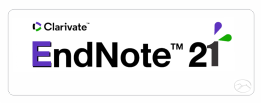The Role of Emotional Marketing and eWOM in Sustaining Competitive Advantage in the Digital Era: A Dynamic Capabilities-Based Strategic Framework
Publicado 2022-04-20
Palabras clave
- Emotional marketing, electronic word of mouth, dynamic capabilities, digital era, sustainable competitive advantage.
Cómo citar
Resumen
Emotional marketing has become a paradigm shift for businesses' survival and success in today's competitive environment, as it enables them to build customer loyalty and increase sales. In today's digital age, electronic word of mouth (eWOM) is a potent tool that customers can use to communicate their emotions to a large audience. Thus, managing customer emotions can pay off handsomely for businesses, as eWOM can rapidly spread positive emotions to a large audience. However, the business environment of the twenty-first century is uncertain and complex, necessitating the development of dynamic capabilities to respond to impending change. This research combines three contemporary streams of thought, namely emotional marketing (as sensing capability), eWOM (as seizure capability), and dynamic capabilities (as to respond capability). As a result, the study develops a dynamic capabilities-based strategic framework that demonstrates the critical role of emotional marketing and eWOM in a firm's capability to sustain its competitive advantage in the digital era. Furthermore, the research suggests that the proposed EM-WOM-DC strategic framework for sustainable competitive advantage strengthens the relationship between emotional marketing and sustainable competitiveness and the relationship between eWOM and sustainable competitiveness.
Descargas
Citas
Alhamad, I. A., & Singh, H. P. (2021a). Decoding Significant and Trivial Factors Influencing Online Hotel Ratings: The Case of Saudi Arabia's Makkah City. International Transaction Journal of Engineering, Management, & Applied Sciences & Technologies, 12(7), 12A7H, 1-11. http://doi.org/10.14456/ITJEMAST.2021.134
Alhamad, I. A., & Singh, H. P. (2021b). Predicting Key Factors Impacting Online Hotel Ratings Using Data Mining Approach: A Case Study of the Makkah City of Saudi Arabia. International Transaction Journal of Engineering, Management, & Applied Sciences & Technologies, 12(2), 12A2N, 1-12. http://doi.org/10.14456/ITJEMAST.2021.35
Alshammari, T. S., & Singh, H. P. (2018). Preparedness of Saudi Arabia to Defend Against Cyber Crimes: An Assessment with Reference to Anti-Cyber Crime Law and GCI Index. Archives of Business Research, 6(12), 131–146. https://doi.org/10.14738/abr.612.5771
Ambrosini, V., & Bowman, C. (2009). What are dynamic capabilities and are they a useful construct in strategic management? International Journal of Management Reviews, 11(1), 29–49. https://doi.org/10.1111/j.1468-2370.2008.00251.x
Ambrosini, V., Bowman, C., & Collier, N. (2009). Dynamic Capabilities: An Exploration of How Firms Renew their Resource Base. British Journal of Management, 20, S9–S24. https://doi.org/10.1111/j.1467-8551.2008.00610.x
Andersén, J. (2010). Resource?based competitiveness: managerial implications of the resource?based view. Strategic Direction, 26(5), 3–5. https://doi.org/10.1108/02580541011035375
Barney, J. (1991). Firm Resources and Sustained Competitive Advantage. Journal of Management, 17(1), 99-120. https://doi.org/10.1177/014920639101700108
Barney, J., Wright, M., & Ketchen, D. J. (2001). The resource-based view of the firm: Ten years after 1991. Journal of Management, 27(6), 625-641. https://doi.org/10.1016/s0149-2063(01)00114-3
Barrena, R., & Sánchez, M. (2009). Using emotional benefits as a differentiation strategy in saturated markets. Psychology & Marketing, 26(11), 1002–1030. https://doi.org/10.1002/mar.20310
Barreto, I. (2009). Dynamic Capabilities: A Review of Past Research and an Agenda for the Future. Journal of Management, 36(1), 256–280. https://doi.org/10.1177/0149206309350776
Chien, S., & Tsai, C. (2012). Dynamic capability, knowledge, learning, and firm performance. Journal of Organizational Change Management, 25(3), 434–444. https://doi.org/10.1108/09534811211228148
Correia, R. J., Dias, J. G., & Teixeira, M. S. (2020). Dynamic capabilities and competitive advantages as mediator variables between market orientation and business performance. Journal of Strategy and Management, 14(2), 187–206. https://doi.org/10.1108/jsma-12-2019-0223
Desarbo, W. S., Benedetto, C. A., & Song, M. (2007). A heterogeneous resource based view for exploring relationships between firm performance and capabilities. Journal of Modelling in Management, 2(2), 103-130. https://doi.org/10.1108/17465660710763407
Dwivedi, Y. K., Hughes, D. L., Coombs, C., Constantiou, I., Duan, Y., Edwards, J. S., Gupta, B., Lal, B., Misra, S., Prashant, P., Raman, R., Rana, N. P., Sharma, S. K., & Upadhyay, N. (2020). Impact of COVID-19 pandemic on information management research and practice: Transforming education, work and life. International Journal of Information Management, 55, 102211. https://doi.org/10.1016/j.ijinfomgt.2020.102211
Eisenhardt, K. M., & Martin, J. A. (2000). Dynamic capabilities: what are they? Strategic Management Journal, 21(10–11), 1105–1121. https://doi.org/https://doi.org/10.1002/1097-0266(200010/11)21:10/11<1105::AID-SMJ133>3.0.CO;2-E
Flanagin, A. J., & Metzger, M. J. (2013). Trusting expert- versus user-generated ratings online: The role of information volume, valence, and consumer characteristics. Computers in Human Behavior, 29(4), 1626–1634. https://doi.org/10.1016/j.chb.2013.02.001
Freitag, P. M., & Brettel, M. (2017). Building up Dynamic Capabilities for the Digital Age. Academy of Management Proceedings, 2017(1), 12890. https://doi.org/10.5465/ambpp.2017.12890abstract
Grant, R. M. (1991). The Resource-Based Theory of Competitive Advantage: Implications for Strategy Formulation. California Management Review, 33(3), 114–135. https://doi.org/10.2307/41166664
Güttel, W. H., Konlechner, S., & Müller, B. (2018). A dynamic capabilities perspective on managing technological change: a review, framework and research agenda. International Journal of Technology Management, 76(3/4), 188. https://doi.org/10.1504/ijtm.2018.10012460
Hindarsah I., Nurjayab, Sunarsic D., Pratamad A., Ariantoe N., Purwantif Y., Kasmadg, & Oktarini R. (2021). The Influence of Service Quality, Emotional Marketing and Spiritual Marketing On Customer Satisfaction. Turkish Journal of Computer and Mathematics Education (TURCOMAT), 12(3), 3685–3689. https://doi.org/10.17762/turcomat.v12i3.1650
Holdford, D. A. (2018). Resource-based theory of competitive advantage – a framework for pharmacy practice innovation research. Pharmacy Practice, 16(3), 1351. https://doi.org/10.18549/pharmpract.2018.03.1351
Huete-Alcocer, N. (2017). A Literature Review of Word of Mouth and Electronic Word of Mouth: Implications for Consumer Behavior. Frontiers in Psychology, 8, 1–4. https://doi.org/10.3389/fpsyg.2017.01256
Huy, Q., & Zott, C. (2018). Exploring the affective underpinnings of dynamic managerial capabilities: How managers’ emotion regulation behaviors mobilize resources for their firms. Strategic Management Journal, 40(1), 28–54. https://doi.org/10.1002/smj.2971
Jantunen, A., Tarkiainen, A., Chari, S., & Oghazi, P. (2018). Dynamic capabilities, operational changes, and performance outcomes in the media industry. Journal of Business Research, 89, 251–257. https://doi.org/10.1016/j.jbusres.2018.01.037
Julian, C. C. (2008). Emotional Dissonance and Customer Service: An Exploratory Study. Services Marketing Quarterly, 29(3), 1–23. https://doi.org/10.1080/15332960802125882
Kabongo, J. D., & Boiral, O. (2017). Doing More with Less: Building Dynamic Capabilities for Eco-Efficiency. Business Strategy and the Environment, 26(7), 956–971. https://doi.org/10.1002/bse.1958
Karman, A., & Savanevi?ien?, A. (2020). Enhancing dynamic capabilities to improve sustainable competitiveness: insights from research on organisations of the Baltic region. Baltic Journal of Management, 16(2), 318–341. https://doi.org/10.1108/bjm-08-2020-0287
Khuong, M. N., & Tram, V. N. B. (2015). The Effects of Emotional Marketing on Consumer Product Perception, Brand Awareness and Purchase Decision — A Study in Ho Chi Minh City, Vietnam. Journal of Economics, Business and Management, 3(5), 524–530. https://doi.org/10.7763/joebm.2015.v3.240
Leonidou, L. C., Leonidou, C. N., Fotiadis, T. A., & Aykol, B. (2015). Dynamic capabilities driving an eco-based advantage and performance in global hotel chains: The moderating effect of international strategy. Tourism Management, 50, 268–280. https://doi.org/10.1016/j.tourman.2015.03.005
Ngarmwongnoi, C., Oliveira, J. S., AbedRabbo, M., & Mousavi, S. (2020). The implications of eWOM adoption on the customer journey. Journal of Consumer Marketing, 37(7), 749–759. https://doi.org/10.1108/jcm-10-2019-3450
Nieves, J., Quintana, A., & Osorio, J. (2015). Organizational knowledge, dynamic capabilities and innovation in the hotel industry. Tourism and Hospitality Research, 16(2), 158–171. https://doi.org/10.1177/1467358415600208
Pandey, U. S., Kumar, V., & Singh, H. P. (2017). Cyber Crimes and Laws (1st ed.). Himalaya Publishing House.
Park, D. H., & Kim, S. (2008). The effects of consumer knowledge on message processing of electronic word-of-mouth via online consumer reviews. Electronic Commerce Research and Applications, 7(4), 399–410. https://doi.org/10.1016/j.elerap.2007.12.001
Pattanasing, K., Aujirapongpan, S., & Srimai, S. (2019). Dynamic capabilities and high-performance organization of hotel business: empirical investigation into world class tourism destination. Tourism and Hospitality Management, 25(2), 377–401. https://doi.org/10.20867/thm.25.2.8
Pauwels, K. (2004). How Dynamic Consumer Response, Competitor Response, Company Support, and Company Inertia Shape Long-Term Marketing Effectiveness. Marketing Science, 23(4), 596–610. https://doi.org/10.1287/mksc.1040.0075
Ramachandran, V. (2010). Strategic corporate social responsibility: a ‘dynamic capabilities’ perspective. Corporate Social Responsibility and Environmental Management, 18(5), 285–293. https://doi.org/10.1002/csr.251
Saidani, B., & Sudiarditha, I. K. (2019). Marketing Mix-7Ps: The Effect on Customer Satisfaction. Jurnal Pendidikan Ekonomi Dan Bisnis (JPEB), 7(1), 72–86. https://doi.org/10.21009/jpeb.007.1.7
Schilke, O., Hu, S., & Helfat, C. E. (2018). Quo Vadis, Dynamic Capabilities? A Content-Analytic Review of the Current State of Knowledge and Recommendations for Future Research. Academy of Management Annals, 12(1), 390–439. https://doi.org/10.5465/annals.2016.0014
Serra-Cantallops, A., Ramon-Cardona, J., & Salvi, F. (2018). The impact of positive emotional experiences on eWOM generation and loyalty. Spanish Journal of Marketing - ESIC, 22(2), 142–162. https://doi.org/10.1108/sjme-03-2018-0009
Singh, A. K., & Thirumoorthi, P. (2019). The Impact of Digital Disruption Technologies on Customer Preferences: The Case of Retail Commerce. International Journal of Recent Technology and Engineering, 8(3), 1255–1261. https://doi.org/10.35940/ijrte.c4404.098319
Singh, H. P. (2013). Innovative ICT Through Cloud Computing. The IUP Journal of Computer Sciences, 7(1), 37–52.
Singh, H. P. (2017). Strategic Analysis and Security Issues of Social Media Services: A Study of Facebook. International Journal of Information Movement, II(V), 134–139.
Singh, H. P. (2018a). Domain Name Disputes and Their Resolution under UDRP Route: A Review. Archives of Business Research, 6(12), 147-156. https://doi.org/10.14738/abr.612.5786
Singh, H. P. (2018b). Cybersquatting and the Role of Indian Courts: A Review. Amity Journal of Computational Sciences, 2(2), 18–23.
Singh, H. P. (2018c). Data Protection and Privacy Legal-Policy Framework in India: A Comparative Study vis-à-vis China and Australia. Amity Journal of Computational Sciences, 2(2), 24-29.
Singh, H. P. (2019). Exploiting RFID for Business Transformation: A Strategic Analysis vis-à-vis Agricultural Bank of China. International Education and Research Journal, 5(1), 19–23. http://ierj.in/journal/index.php/ierj/article/view/1813/1722
Singh, H. P., & Agarwal, A. (2011). Espousal of E-Learning in Adult Education. In Proceedings of the International Conference on Computational Techniques and Artificial Intelligence (pp. 28-31). Pattaya, Thailand: ISEM-Planetary Scientific Research Centre.
Singh, H. P., & Alhamad, I. A. (2021). Deciphering Key Factors Impacting Online Hotel Ratings Through the Lens of Two-Factor Theory: A Case of Hotels in the Makkah City of Saudi Arabia. International Transaction Journal of Engineering, Management, & Applied Sciences & Technologies, 12(8), 12A8M, 1-12. https://doi.org/10.14456/ITJEMAST.2021.160
Singh, H. P., & Alshammari, K. (2021). Impacts of Digital Technology-Enabled Personalized and Adaptive Learning on Student Learning Performance: A TOE Framework for Saudi Arabia. International Transaction Journal of Engineering, Management, & Applied Sciences & Technologies, 12(13), 1–12. https://doi.org/10.14456/ITJEMAST.2021.262
Singh, H. P., & Alshammari, T. S. (2020). An Institutional Theory Perspective on Developing a Cyber Security Legal Framework: A Case of Saudi Arabia. Beijing Law Review, 11(03), 637–650. https://doi.org/10.4236/blr.2020.113039
Singh, H. P., & Grover, S. T. (2011). Marketing of E-banking Services: A Critical Analysis on Lifecycle Demographics, Enabling and Disabling Factors. Zenith International Journal of Multidisciplinary Research, 1(7), 20-38.
Singh, H. P., Kumar, V., & Agrawal, A. (2015). Demystifying Information Technology Projects Success and Failure Factors: The Cases of California DMV and BancoItamarati Bank. Mumukshu Journal of Humanities, 7(1), 493–499.
Standing, C., Holzweber, M., & Mattsson, J. (2016). Exploring emotional expressions in e-word-of-mouth from online communities. Information Processing & Management, 52(5), 721–732. https://doi.org/10.1016/j.ipm.2016.01.001
Sun, T., Youn, S., Wu, G., & Kuntaraporn, M. (2006). Online Word-of-Mouth (or Mouse): An Exploration of Its Antecedents and Consequences. Journal of Computer-Mediated Communication, 11(4), 1104–1127. https://doi.org/10.1111/j.1083-6101.2006.00310.x
Szymkowiak, A., Gaczek, P., Jeganathan, K., & Kulawik, P. (2020). The impact of emotions on shopping behavior during epidemic. What a business can do to protect customers. Journal of Consumer Behaviour, 20(1), 48–60. https://doi.org/10.1002/cb.1853
Teece, D. J. (2007). Explicating dynamic capabilities: the nature and microfoundations of (sustainable) enterprise performance. Strategic Management Journal, 28(13), 1319–1350. https://doi.org/10.1002/smj.640
Teece, D. J., Pisano, G., & Shuen, A. (1997). Dynamic capabilities and strategic management. Strategic Management Journal, 18(7), 509–533. https://doi.org/10.1002/(SICI)1097-0266(199708)18:7<509::AID-SMJ882>3.0.CO;2-Z
Teece, D., Peteraf, M., & Leih, S. (2016). Dynamic Capabilities and Organizational Agility: Risk, Uncertainty, and Strategy in the Innovation Economy. California Management Review, 58(4), 13–35. https://doi.org/10.1525/cmr.2016.58.4.13
Tomsett, D. (2020, February 28). Emotional Connection: 2020’s Biggest CX Trend. Forbes. https://www.forbes.com/sites/forbestechcouncil/2020/02/28/emotional-connection-2020s-biggest-cx-trend/
Tseng, S. M., & Lee, P. S. (2014). The effect of knowledge management capability and dynamic capability on organizational performance. Journal of Enterprise Information Management, 27(2), 158–179. https://doi.org/10.1108/jeim-05-2012-0025
Vial, G. (2019). Understanding digital transformation: A review and a research agenda. The Journal of Strategic Information Systems, 28(2), 118–144. https://doi.org/10.1016/j.jsis.2019.01.003
Wang, C. L., & Ahmed, P. K. (2007). Dynamic capabilities: A review and research agenda. International Journal of Management Reviews, 9(1), 31–51. https://doi.org/10.1111/j.1468-2370.2007.00201.x
White, T. B., Lemon, K. N., & Hogan, J. E. (2007). Customer retention when the customer’s future usage is uncertain. Psychology & Marketing, 24(10), 849–870. https://doi.org/10.1002/mar.20187
Yudelson, J. (1999). Adapting Mccarthy’s Four P’s for the Twenty-First Century. Journal of Marketing Education, 21(1), 60–67. https://doi.org/10.1177/0273475399211008











